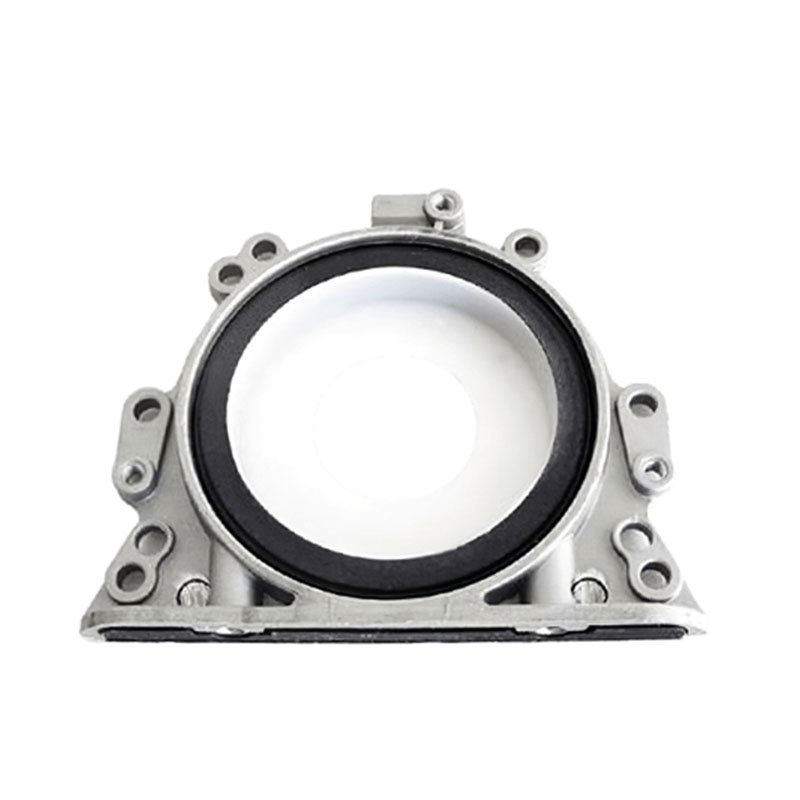Transmission Gasket Seal Solutions for Enhanced Vehicle Performance and Leak Prevention
Transmission Gasket Seal An Essential Component for Vehicle Performance
The transmission gasket seal plays a crucial role in the efficiency and longevity of a vehicle's transmission system. As a critical component, it ensures that the transmission fluid remains sealed within the transmission case, preventing leaks and maintaining optimal performance. Understanding the functions, importance, and maintenance of this component can help vehicle owners appreciate its role in automotive health.
What is a Transmission Gasket Seal?
A transmission gasket seal is a flat, thin material that is designed to create a barrier between the various components of the transmission. Made from materials such as rubber, cork, or silicone, these gaskets are engineered to withstand high pressures and temperatures, which are common in a vehicle’s operating environment. The primary purpose of a gasket is to provide a tighter fit between the transmission case and the related parts, thus preventing fluid leaks that can lead to significant mechanical failures.
Importance of the Transmission Gasket Seal
1. Leak Prevention One of the primary functions of the gasket seal is to prevent transmission fluid from leaking out of the transmission assembly. Transmission fluid is essential for lubricating gears, maintaining hydraulic pressure for gear shifting, and dissipating heat. A leak can reduce fluid levels, leading to potential damage and costly repairs.
2. Performance Optimization A well-functioning transmission gasket seal is vital for optimal transmission performance. It helps maintain the right amount of fluid pressure, ensuring smooth shifts and enhancing driving comfort. Any failings in the seal can cause performance issues, such as slipping gears or erratic shifting.
3. Protection Against Debris The gasket also serves as a barrier against dirt, dust, and other contaminants that could enter the transmission and cause wear or damage. This protective role is essential in prolonging the lifespan of the transmission system.
Signs of a Failing Gasket Seal
transmission gasket seal

Awareness of the signs of a failing transmission gasket seal can save vehicle owners from more significant issues down the road. Here are some common indicators
- Fluid Leaks Puddles of reddish-brown transmission fluid under the vehicle are a clear sign that the gasket seal may be compromised. - Slipping Gears If the vehicle hesitates or struggles to shift gears, it might indicate low fluid levels due to leaks caused by a damaged gasket. - Unusual Noises Grinding or whining noises when changing gears can also signal transmission issues connected to gasket failure.
Maintenance and Replacement
Regular maintenance is crucial to ensuring the longevity of the transmission gasket seal and the transmission system itself. Vehicle owners should consider the following practices
- Routine Inspections Regularly checking fluid levels and looking for any signs of leaks can help detect issues early on. Inspecting the transmission for any damage or wear can also provide insights into the gasket's condition. - Fluid Changes Changing the transmission fluid according to the manufacturer's recommendations can help reduce wear on the gasket and other transmission components. - Professional Assessment If any signs of gasket failure are observed, it’s best to consult with a professional mechanic. They can provide a thorough examination and suggest necessary repairs or replacements.
Replacing a faulty transmission gasket seal is essential but can be a challenge for the average vehicle owner. The process involves draining the transmission fluid, removing the transmission pan, replacing the old seal with a new one, and then reassembling everything. Due to the complexity of the task, professional service is often recommended.
Conclusion
The transmission gasket seal is a small but vital component that significantly impacts vehicle performance. Its ability to prevent leaks, protect against contaminants, and maintain fluid pressure makes it essential for the smooth operation of the transmission system. Understanding the importance of this component and recognizing the signs of wear can help vehicle owners maintain their cars effectively and avoid costly repairs. Regular maintenance and prompt attention to issues can ensure that your vehicle operates at its best for years to come.
-
Simplifying Oil Changes: A Comprehensive Guide to Oil Drain Plugs and Their Variants
News Aug.04,2025
-
Mastering Oil Drain Maintenance: Solutions for Stripped, Worn, and Upgraded Oil Plugs
News Aug.04,2025
-
Fixing Oil Pan Plug Issues: Leaks, Stripped Nuts, and the Right Replacement Solutions
News Aug.04,2025
-
Everything You Need to Know About Oil Drain Plugs: Sizes, Fixes, and Upgrades
News Aug.04,2025
-
Choosing the Right Oil Drain Plug: A Guide to Sizes, Materials, and Drain Innovations
News Aug.04,2025
-
A Complete Guide to Automotive Drain Plugs: Types, Problems, and Innovative Solutions
News Aug.04,2025
-
The Ultimate Guide to Car Repair Kits: Tools and Essentials Every Driver Should Own
News Aug.01,2025
Products categories















